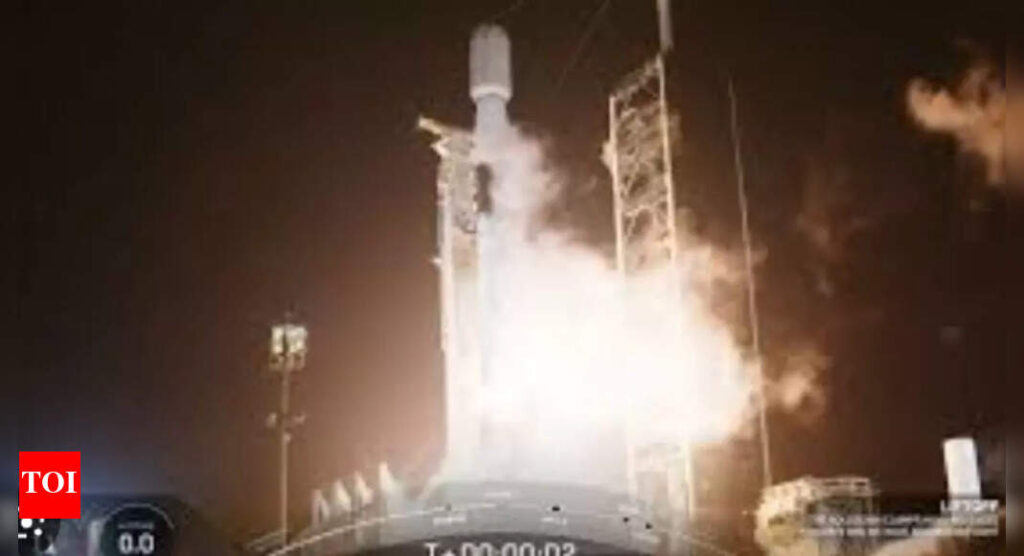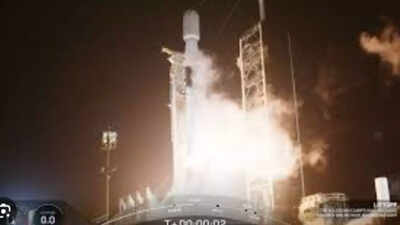On May 13, 2025, at 1:02 a.m. EDT (0502 GMT), SpaceX launched another mission to build out its Starlink network. The Falcon 9 rocket launched from NASA’s Kennedy Space Center in Florida, launching 28 Starlink satellites into low Earth orbit (LEO). This launch represents an important milestone in the development of SpaceX’s satellite internet constellation, affirming its commitment to offering global broadband coverage. The mission emphasises SpaceX’s ongoing success in spaceflight, demonstrating the efficiency of the company in carrying out regular launches to address the increasing need for high-speed internet connectivity across the globe.
SpaceX reaches new heights with 28 successful flights of Booster B1067
One of the most significant feats of this mission was the historic performance of Falcon 9 first stage booster, B1067. This specific booster has now successfully flown for 28 times, breaking a record for most reuses by any Falcon 9 first stage. This is not only a landmark achievement for SpaceX’s reusability initiative but also testifies to the company’s effort to make space travel cheaper using rocket recovery and reuse.SpaceX transformed spaceflight by being the first to implement the reusable rocket concept, significantly reducing the cost of putting payloads into orbit. Every reuse of the Falcon 9 first stage lowers the cost of subsequent missions, making space more affordable and opening the door to an age of cheap, frequent space travel. The 28th mission of booster B1067 is a testament to the innovativeness of SpaceX, and its repeated successful landings are a pointer to a time when space missions become more efficient and cost-effective.
Falcon 9 booster makes perfect landing on drone ship after successful launch
After a perfect lift-off from the Kennedy Space Center, the first stage booster of the Falcon 9 rocket executed its standard climb into space before disconnecting and initiating its descent back to Earth. Around eight minutes after liftoff, the booster landed safely on the autonomous drone ship, “Just Read the Instructions,” in the Atlantic Ocean. This swift and accurate landing further solidifies SpaceX as a rocket reusability leader.As the booster returned to Earth, the Falcon 9 rocket’s upper stage continued to transport the 28 Starlink satellites to their destination orbits. At approximately 65 minutes from launch, the satellites were deployed successfully, expanding the Starlink constellation, which now provides high-speed internet connectivity to underserved areas across the globe.Falcon 9 booster landing on drone ships at sea is a hallmark by SpaceX. Drone ships are specifically tailored to recover boosters that have finished their mission and are returning from space. The capability to land a booster on a drone ship in the ocean is a remarkable achievement in engineering and logistics, with flawless coordination between the guidance systems of the rocket and the position of the drone ship in the sea.
Starlink expands its global reach with 28 new satellites in historic mission
Starlink not only represents SpaceX’s biggest venture but also the biggest satellite constellation ever built in the history of mankind. The mission of the network is to offer global broadband internet coverage, particularly to rural and underserved communities that normally do not have access to fast internet. The 28 satellites that were sent on May 13 contribute to the almost 7,400 working satellites that are already revolving around Earth in the constellation, astrophysicist and satellite tracker Jonathan McDowell reported.As the need for fast internet keeps increasing globally, especially in rural or remote areas, Starlink seeks to offer low-latency and dependable internet service worldwide. With several launches taking place every month, the constellation is expanding exponentially. The launch of 28 satellites in one mission is a testament to the size of SpaceX’s ambition, with regular launches enabling them to quickly expand the network.
SpaceX celebrates rapid success with two Starlink missions in just 48 hours
May 13 was not the first landmark that SpaceX celebrated in the last few days. Just a day before, on May 12, a Falcon 9 rocket launched 26 Starlink satellites from Vandenberg Space Force Base in California. This is the second Starlink mission in an extremely short interval, showcasing the remarkable launch rhythm and capacity of SpaceX to execute frequent space activities.The ability of SpaceX to launch several missions within this brief window exemplifies the company’s refined logistics and launch infrastructure. From quickly reusing boosters to launching multiple satellites at once, SpaceX’s streamlined process allows them to keep up with the competition and address the increasing demand for internet services based on satellites.
Booster B1067: SpaceX’s versatile workhorse with a legacy of successful missions
Booster B1067 has been one of SpaceX’s most dependable workhorses to date, with a wide variety of missions completed. Not only have these included satellite deployments, but also important NASA crewed flights and cargo resupply missions. Some of the most prominent missions this booster has provided include:
- CRS-22 (cargo resupply to the International Space Station)
- Crew-3 and Crew-4 (NASA astronaut missions)
- Turksat 5B (communications satellite for Turkey)
- CRS-25 (another resupply mission for the ISS)
- Eutelsat HOTBIRD 13G (European communications satellite)
- O3B mPOWER (SES global communication system)
- PSN SATRIA (Indonesian communications satellite)
- Galileo L13 (European GPS system component)
- Koreasat-6A (South Korean communications satellite)
- 17 Starlink missions
Such flexibility and dependability are the secret to SpaceX’s success in launching a broad range of payloads on schedule and within budget.
SpaceX’s starlink expands, shaping the future of global connectivity
As the Starlink network expands, SpaceX’s ambition goes far beyond offering internet to underserved areas. The firm intends to use its expanding constellation to develop worldwide connectivity for anything from city infrastructure to autonomous vehicles and worldwide communications. The success of the May 13 mission, and the continued frequency of launches, shows that SpaceX is establishing the foundation for future technological innovations that will define the next generation of space-based services.Also Read | This 400-year-old Catholic saint’s body has amazed scientists with its preservation; discover the science behind


